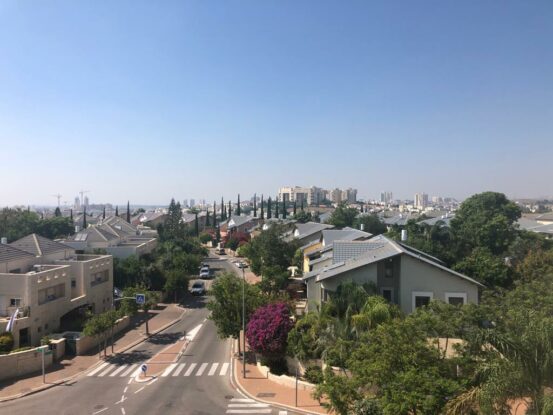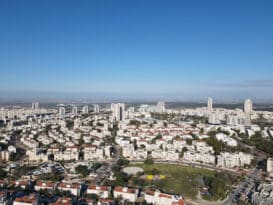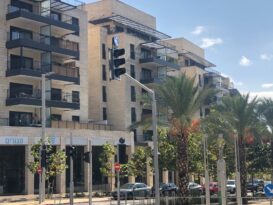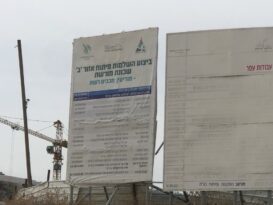According to a new master plan, one of Israel’s most popular cities is expected to multiply its current population by two hundred and fifty percent within the next two decades. In addition to increasing the population, a new business center will be established in the northern part of the city, which will include a medical center and an academic institution. While the area of the southern hills has been designated a national park and will be preserved as an open area for future generations, Maccabim and Reut, will retain their unique characters with private, residential homes.
Over the next 20 years, the city of Modi’in (officially Modi’in Maccabim Reut) is expected to double its population by two and a half from almost 100,000 residents today, to about 250,000 people, according to the new outline plan for the city approved a few days ago by the Subcommittee of the National Planning and Building Council. The new plan sets out how the city will develop by 2040. Now there is one stage left before the final approval of the plan, which is its approval by the Central District Planning and Construction Committee. Once approved, houses in Modi’in are expected to appreciate further in value.
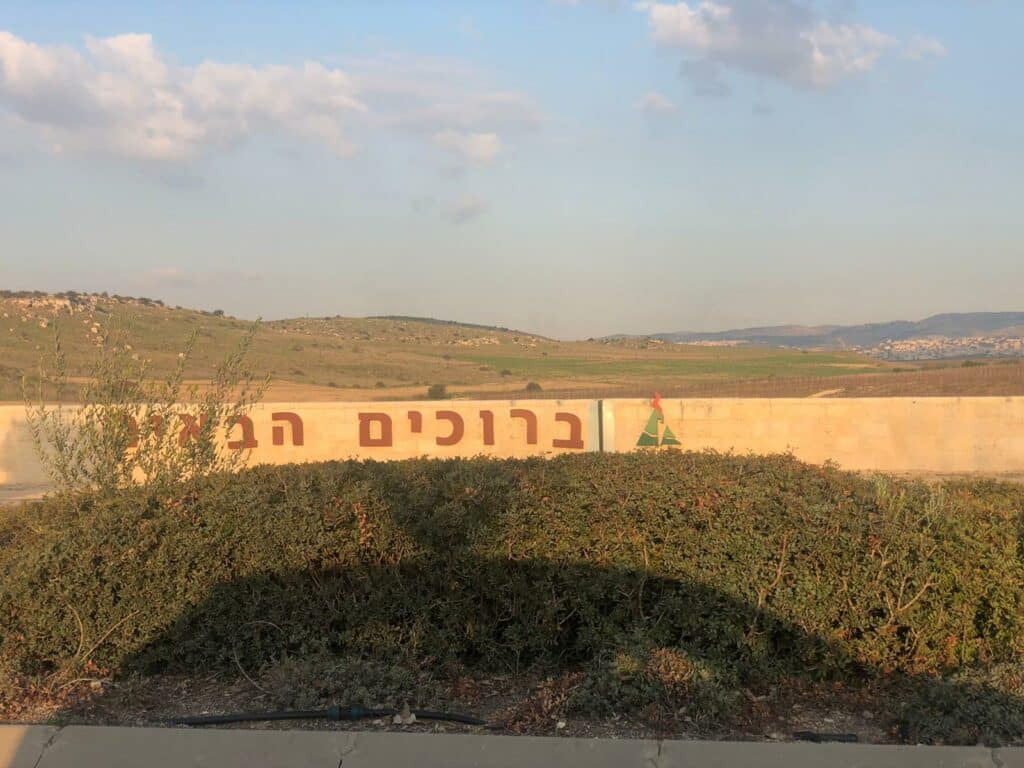
The plan was started by the Modiin Municipality and the Ministry of the Interior as early as 2014 and has since undergone a number of changes and upheavals. The plan applies to the entire municipal area of the city of Modi’in consisting of about 55,000 dunams and outlines principles and long-term policies for the planning and development of the city. The plan determines the construction of additional residential neighborhoods, as well as the establishment of a new business center in the northwestern part of the city that will combine residential, employment, and commerce, as well as a medical center and an academic institution that will be built adjacent to it. The plan also determines the connection of the new business center to the existing city center through an underground rail extension.
Modi’in, located halfway between Jerusalem and Tel Aviv, is one of the youngest cities in Israel. Construction began in 1994, and in 2003 it was decided to unify the city with the nearby community of Maccabim-Reut. According to the Central Bureau of Statistics, the city’s population was about 97,000 as of the end of 2021, placing it 19th in the ranking of the size of the Israeli authorities. In addition, it is one of the most established cities in Israel, and it ranks in a socioeconomic cluster 9 out of 10, similar to Ramat Hasharon and Kiryat Ono. Modi’in is also known to be among the preferred destinations for new immigrants, mainly from English-speaking countries, who are attracted to the city’s central location, private houses and spacious apartments, and futuristic planning.
Over the past year, there has been a sharp increase in the price of houses and apartments in Modi’in, with the average price of a four-bedroom apartment climbing from about NIS 2.1 million a year ago, to NIS 2.4-2.5 million today, while the price of 5-room apartments climbed from NIS 2.4-2.5 million a year ago to NIS 2.7-2.8 million today. Private homes (detached or semi-detached) in the desirable neighborhood of Buchman and in Reut are hard to come by. For those fortunate enough to find one that is available for sale, prices range between 5 million and 8 million shekles depending on location, size, condition and age of the property.
One of the main issues discussed in the committee was the future of Maccabim and Reut, formerly two independent communities, which were merged with Modi’in, and which now constitute separate neighborhoods of the city. According to the original plan, the neighborhoods were supposed to be reduced, as part of the creation of a larger urban area. However, in addressing the objections to the plan, it was conclusively decided to maintain the rural nature of these two neighborhoods. Since, these areas are not planned for expansion the number of private houses in Modi’in Maccabim Reut is not expected to increase and therefore existing properties will become further desirable, and will likely lead to a sharp jump in value in the coming years.
The Subcommittee on Planning Issues in Principle also decided that the area of the southern hills of the municipality would be defined as a national park and that areas in the western part of the city would be designated as extensive forest areas, in part due to objections to the plan submitted by a number of green bodies, including the Society for the Protection of Nature.
Dalit Zilber, executive director of the Planning Administration, who serves as Chair of the Subcommittee on Planning Issues in Principle, said after the plan was approved that “the Subcommittee saw before its eyes a plan that embodies all the planning qualities of an intensive, urban and detailed city, without the need to incorporate the southern hills. The decision stipulates that the valued areas, which are part of the ecological corridor defined in the strategic plan, must be preserved. In addition, the decision offers a balance between the number of housing units required for a quarter of a million residents on the one hand and the preservation of the valued areas for future generations on the other.”
